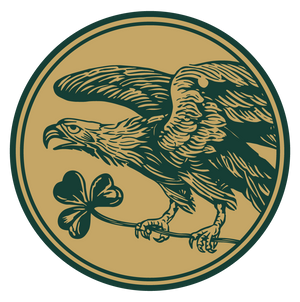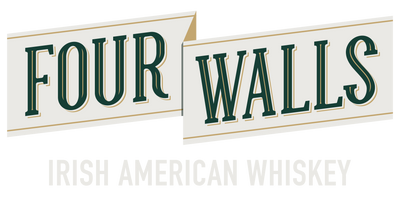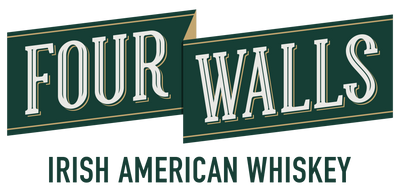Philadelphia’s Doc Watson’s Pub, its Appeal was Elementary, and Much Deserved

Things didn’t look great for Barry Sandrow in 1971. At 38 years old, he’d bounced around the Philadelphia hospitality industry, like a rubber ball dropped by a toddler, landing erratically at this bar or that one, never really finding a home. The year 1955 found him on 15th Street, pouring drinks at Lou’s Brighton Bar. Next it was the Frolic Show Bar on Walnut, and then from there he drifted to the Terminal Café. By the middle of the Nixon administration, he’d burned through 19 bars and restaurants, and was staring middle age in the face. Then the worm turned. Barry opened Dr. Watson’s Pub, and the rest is beer-soaked, disco-sweating, country music-infused history.

Opened on South 11th Street, in Center City, Dr. Watson’s Pub (as it was first known, before earning its later, more recognized name of “Doc” Watson’s), looked like an unassuming recreation of an English pub in the middle of Philly. No big deal. Nothing to make you pause and go in. But behind the doors lurked what would become one of the most popular, sprawling bar/live music/dance venues the city would ever see. And this was in the early 70s, when things sort of sucked. That year, the Pentagon Papers were released, movies were of the gritty, cheerless kind, like Dirty Harry and the French Connection, America’s international allies threw up their hands and turned their backs on the war in Vietnam, and Detroit stopped making good cars.
But Doc Watson’s, a stone’s throw from the venerable Thomas Jefferson University Hospital, was a flash of brilliant color in an otherwise gray decade.
Pass through the small door of the narrow, three-story, brick building, and you were confronted with a long, majestic oak bar on the right and booths to the left. To the rear of the bar was a dining room lit by the soft glow of chandeliers and beer signs. Over the booths was a mural of Sherlock Holmes, with countless names of past regulars scratched into it. Ascend the stairs, and you’d find another full-size bar and live music venue. Go up one more flight to the third and find yet a different bar, this one fronting a dancefloor and DJ table.
Three full floors of brilliant, late-night debauchery.

But I get ahead of myself. During the day, downstairs in the main bar, the kitchen turned out pub grub that garnered a reputation for decent prices and large portions (we won’t bother with the quality, which went through, shall we say, phases over the years). The large selection of beer and full cocktail service weren’t bad for the time and got better and more evolved as the years tumbled by.
Duck in during the day, and you’d find a smattering of hard-drinking neighborhood locals, business professionals, and an assortment of white-jacketed personnel from Thomas Jefferson University (an article from 1974 said the joint was popular with the “swinging nurse set,” which, considering the decade, could have meant a variety of things).
Nightfall would find Doc’s teeming with after-work diners and drinkers, and Friday and Saturday nights would swell the place to capacity. Live music on the second floor would go all week, with an assortment of musical styles and selections. It could be folk music on Tuesdays, blues on Wednesdays, acoustic on Thursdays, and rock covers on Fridays and Saturdays. Upstairs on the third floor was dancing – disco in the late 1970s, according to an article in Billboard Magazine that also noted there was live country music on the second floor at the same time – talk about appealing to different crowds.
The occasional arcade machine, pinball and pool tables also made appearances in the sprawling second floor, anything to divert attention from the outside world.
Over the years, Doc Watson’s grew to become a fixture in downtown Philadelphia, an oasis in the middle of a noble city that was in slow decline. It was so loved that when a fire briefly shut it in 1988, patrons were sending in donations to help speed up the renovations (a mail carrier even handed Sandrow a check for $1,000, which the noble owner said he never cashed). By the early 90s, looking at its third decade in Philly, Doc’s had a regular following, and was on its second generation of patrons. That’s when Sandrow decided it was time to retire from the bar business, and take a moment to relax, so he sold Doc Watson’s, and, as has happened many times before, the bar slowly went downhill.
By the early 2000s, Dr. Watson’s Pub was a shell of the former, celebrated watering hole that so sheltered many a weary, thirsty resident in years past. The almost innocent, pub-like atmosphere had vanished, replaced by the ambiance more often seen in grinder joints: it had become a dive (not to say I don’t love a good dive bar). Still packed on the weekends by revelers, there were frequent issues with the once quietly popular nightspot. Neighbors complained about noise and urination in the alleys. Then, in 2005, the police raided Doc’s in a scene reminiscent of something from the 1920s, and found over 200 underage drinkers, plus a host of other violations. Padlocks were placed on the doors and the owner was thrown in jail. Dr Watson’s Pub was shut.
Sandrow, humiliated by what had become of his beloved bar, bought it back, renovated it and then reopened it in 2006. He ran it for a few more years, but then it finally sold the building to new, more upstanding buyers in 2010, and Dr. Watson’s Pub was closed for good.

If you talk to any Philadelphian past the age of 40 who grew up in the city, they’ll probably have some memory of Doc Watson’s. The older they get, the fonder the memories might be. Really old timers, perhaps the age of yours truly, might remember when Tex Cobb, the hulking, flat-nosed boxer and actor, villain in many a low-budget 80s action movie, checked IDs at the front door on weekends. Or they might talk about the lack of a happy hour, but would reminisce about the free drink you’d get if you were standing at the bar at exactly 5:30. How many would tell you their parents met there for the first time, or maybe that they met their own spouse there back in the day?
Doc Watson’s was one of those places that’s getting harder and harder to find. It wasn’t pretentious in any sort of vulgar way. If you read old stories about it, it’s always described as unassuming and modest. But at the same time, it absolutely catered to the people who walked through its doors. Its prices were low, its entertainment offerings were good, and, back in the day, it didn’t even charge a cover for live music or dancing. The area of Philadelphia in which Doc’s held court was called Center City, and in many ways, that’s what it was, the center of the community. We need more places like that.
Here's to you, Dr. Watson’s, gone but not forgotten! Cheers!
- Tags: Bars Sorry We're Closed



